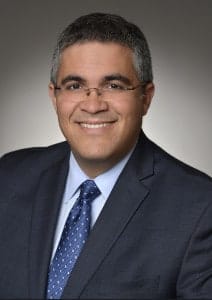By Mauricio Silva, M.D.
With fewer and fewer medical school students choosing primary medicine as a career path, our healthcare system needs to find new ways to provide care to a nation that is growing, aging and increasingly consumer driven. Fortunately we need not look too far as the answer is already in our midst. These are our nurse practitioners.
Even before the Affordable Care Act added millions of insured Americans in need of medical attention, the Association of American Medical Colleges estimated that an additional 45,000 primary care physicians would be needed by 2020 to keep up with demand. This simply isn’t going to happen as an increasing number of medical school students are opting instead for specialties that may bring with them higher income, more prestige and a less-demanding lifestyle. Nurse practitioners can fill this gap in providing the care Americans need.
Nurse practitioners are registered nurses who have completed graduate-level education (either a master’s or a doctoral degree) and who are able to deliver a wide range of primary, acute and specialty-care services. While laws governing what nurse practitioners can or can’t do vary by state, in most cases these healthcare professionals are already prescribing or renewing prescriptions for most drugs; ordering blood tests; performing routine physical examinations; monitoring chronic conditions; counseling patients about prevention; and treating colds, sore throats and the flu.
At the Orthopaedic Institute for Children, we rely heavily on nurse practitioners to staff our urgent care center, which is one of the busiest in Los Angeles County. We’ve seen firsthand the contribution they are making to our community and our patients. And we’re not alone. Today there are more than 155,000 nurse practitioners in the United States who provide high-quality, cost-effective primary care to patients. These nurses not only have advanced academic credentials, but on average have already worked more than ten years as registered nurses, giving them practical, bedside experience to complement what they’ve learned in the classroom.
For nurse practitioners to continue to make full use of their experience and education, three things must happen.
First, hospitals need to better appreciate the value that nurse practitioners can bring and prudently integrate them into their delivery system. This is especially true for hospitals who are focused on population health and moving their strategies from volume-based to value-based reimbursement. Looking outside the traditional walls of a hospital, nurse practitioners can be part of a logical staffing strategy for retail sites in shopping malls (with weekend and evening hours), urgent care centers, outpatient centers or workplace clinics.
Second, primary care physicians should take a fresh look at nurse practitioners as a sensible way to provide quality care and meet the enormous patient demands the current system is simply not prepared to handle. They need to look at these nurses as a natural complement to their practice and a logical partner in caring for their patients.
Third, we need to tear down any outdated regulatory and emotional barriers that might exist, which prevent nurse practitioners from fully using their skills and compassion to help serve the country’s increasing healthcare demands.
The RAND Corp. estimates that the number of nurse practitioners is expected to double by 2025. That’s a good thing, and it parallels America’s growing population as baby boomers age and the combination of healthcare technology and health awareness allows people to live longer than ever before. Let’s leverage the skills, dedication and passion of nurse practitioners as a sensible solution to an already stressed and over-burdened healthcare system.
Mauricio Silva, M.D., is medical director of Orthopaedic Institute for Children in Los Angeles.
The Editorial Team at Healthcare Business Today is made up of skilled healthcare writers and experts, led by our managing editor, Daniel Casciato, who has over 25 years of experience in healthcare writing. Since 1998, we have produced compelling and informative content for numerous publications, establishing ourselves as a trusted resource for health and wellness information. We offer readers access to fresh health, medicine, science, and technology developments and the latest in patient news, emphasizing how these developments affect our lives.








